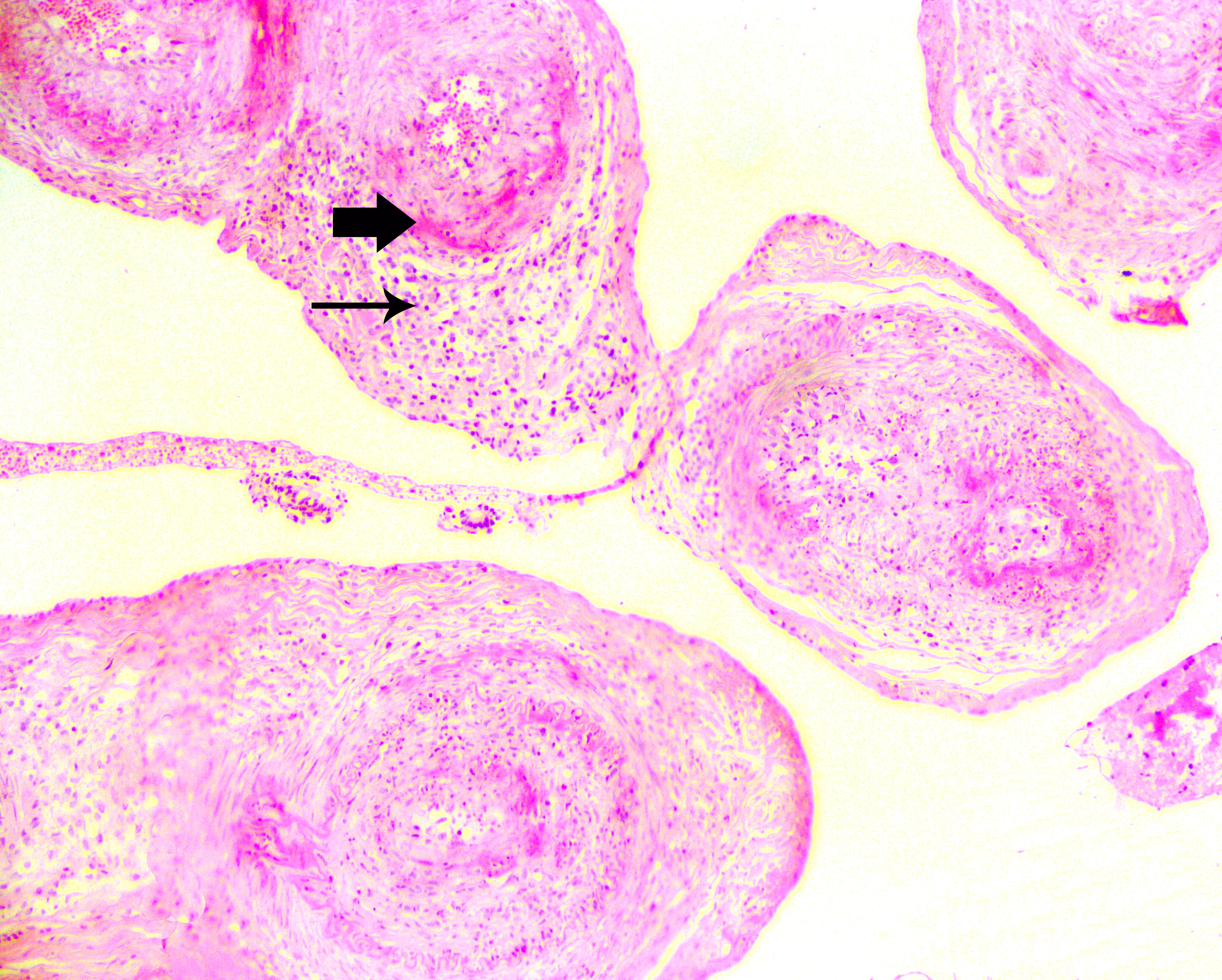Malignant catarrhal fever in dairy cattle in western Santa Catarina state, Brazil
DOI:
https://doi.org/10.52945/rac.v37i2.1818Keywords:
ovine hespesvirus, sheep, livestock, laboratory diagnosis, biosecurityAbstract
The present study reports a case of malignant catarrhal fever (MCF), caused by the ovine hespesvirus type 2 (OvHV-2), in a cattle on a dairy farm in western Santa Catarina in 2023. The animal presented typical clinical signs of the MCF, and for diagnosis, histopathological examination, polymerase chain reaction (PCR) technique and DNA sequencing were performed. This study highlights the importance of keeping ovine and bovine herds separated in order to prevent the transmission of pathogens between these two animal species. Furthermore, this report reinforces the need for laboratory diagnosis to confirm clinical suspicions in order to obtain accurate diagnosis and effective prevention/control of infectious diseases affecting cattle.
Metrics
Publication Facts
Reviewer profiles N/A
Author statements
- Academic society
- Epagri - Revista Agropecuária Catarinense
- Publisher
- Empresa de Pesquisa Agropecuária e Extensão Rural de Santa Catarina - Epagri
References
BAXTER, S.I; POW, I; BRIDGEN, A; REID, H.W. PCR detection of the sheep-associated agent of malignant catarrhal fever. Archives of Virology, v.132, n.1-2, p.145-59, 1993.
GAETA, N. C; RIBEIRO, L. M. B; ALEMÁN, M. A. R; THOMAZELLI, L. M; DURIGON, E. L; NOGUEIRA, A. H. D; DE STEFANO, E; OKUDA, L, H; PITUCO, E. M; GREGORY, L. Evaluation of bovine Parainfluenza type-3 virus and Influenza virus D participation in bovine respiratory disease of calves from Brazilian family farming. Medicina Veterinária (UFRPE), v.1, n.4, p.227–232, 2018.
ESTEVES, P.A; DELLAGOSTIN, O.A; PINTO, L.S; SILVA, A.D; SPILKI, F.R; CIACCI-ZANELLA, J.R; HÜBNER, S.O; PUENTES, R; MAISONNAVE, J; FRANCO, A.C; RIJSEWIJK, F.A; BATISTA, H.B; TEIXEIRA, T.F; DEZEN, D; OLIVEIRA, A.P; DAVID, C; ARNS, C.W. ROEHE, P.M. Phylogenetic comparison of the carboxy-terminal region of glycoprotein C (gC) of bovine herpesviruses (BoHV) 1.1, 1.2 and 5 from South America (SA). Virus Research, v.131, p.16 - 22, 2008.
HEADLEY, S.A; DE OLIVEIRA, T.E.S; CUNHA, C.W. A review of the epidemiological, clinical, and pathological aspects of malignant catarrhal fever in Brazil. Brazilian Journal of Microbiology, v.51, n.3, p1405-1432, 2020. DOI: https://10.1007/s42770-020-00273-6.
LI, H; CUNHA, C.W; TAUS, N.S. Malignant catarrhal fever: understanding molecular diagnostics in context of epidemiology. International journal of molecular sciences, v.212, n.10, p.6881-93, 2011. DOI: https:// 10.3390/ijms12106881.
RUSSELL, G.C; STEWART, J.P; HAIG, D, M. Malignant catarrhal fever: a review. The Veterinary Journal, v.179, n.3, p.324-35, 2009.
USAHA, United States Animal Health Association. Foreign animal diseases. Usaha, 7th revised edition, 2008.
VILCEK, S; ELVANDER, M; BALLAGI-PORDÁNY, A. BELÁK S. Development of nested PCR assays for detection of bovine respiratory syncytial virus in clinical samples. Journal of Clinical Microbiology. v.35, p.2225-2231, 1994.
WEBER, M.N; SILVEIRA, S; MACHADO, G; GROFF, F.H; MÓSENA, A.C; BUDASZEWSKI, R.F; DUPONT, P.M; CORBELLINI, L.G; CANAL, C.W. High frequency of bovine viral diarrhea virus type 2 in Southern Brazil. Virus Research, v.191, p. 117-124, 2014.

Downloads
Published
How to Cite
Issue
Section
License
Copyright (c) 2024 Simone Silveira, Franciéli Adriane Molossi, Cláudia Balzan, Maristela D Maba, Leticia F. Baumbach, Maysa B. Chitolina, Cláudio W. Canal, Giovana Camillo

This work is licensed under a Creative Commons Attribution 4.0 International License.




